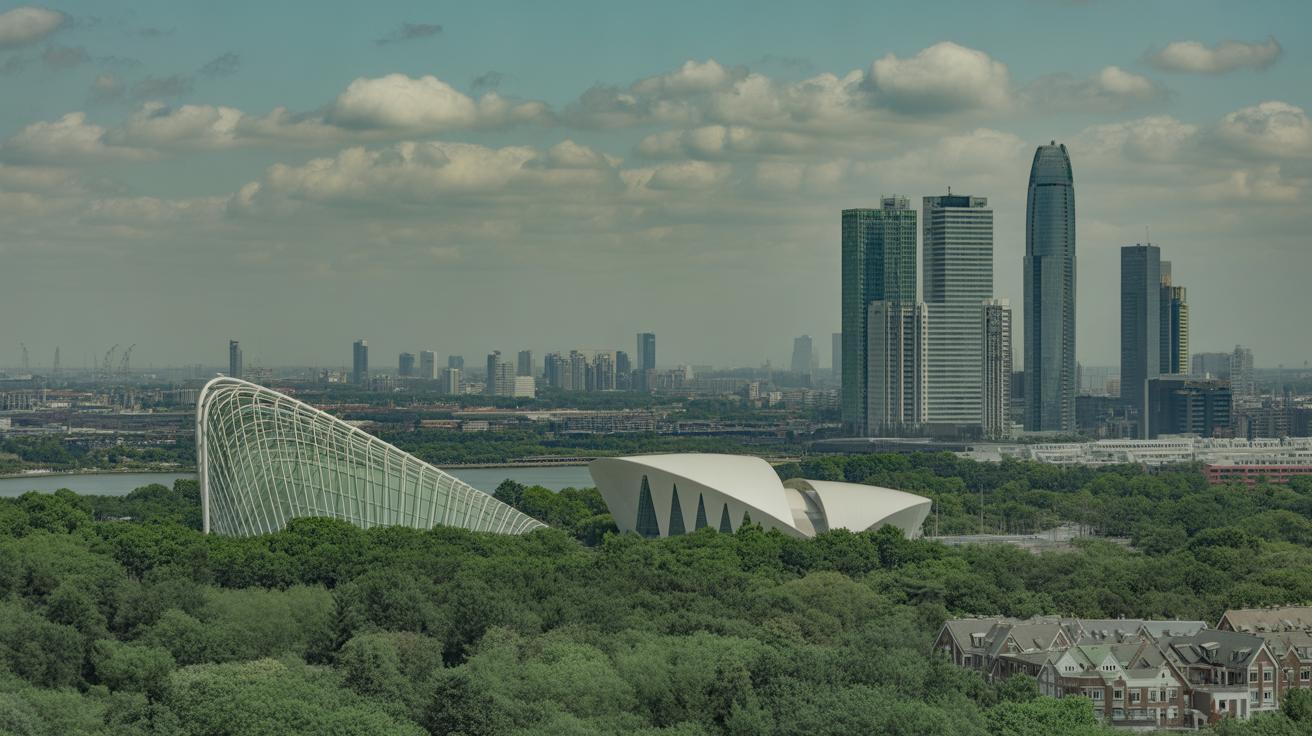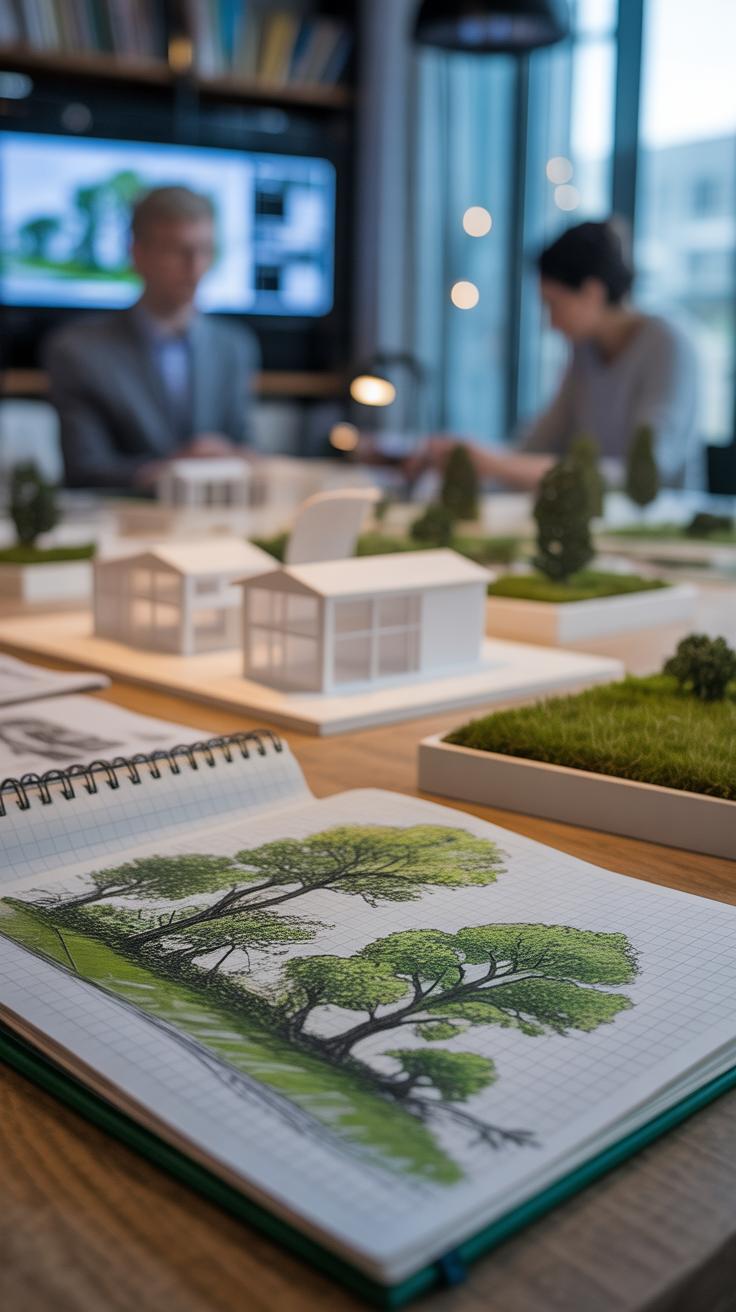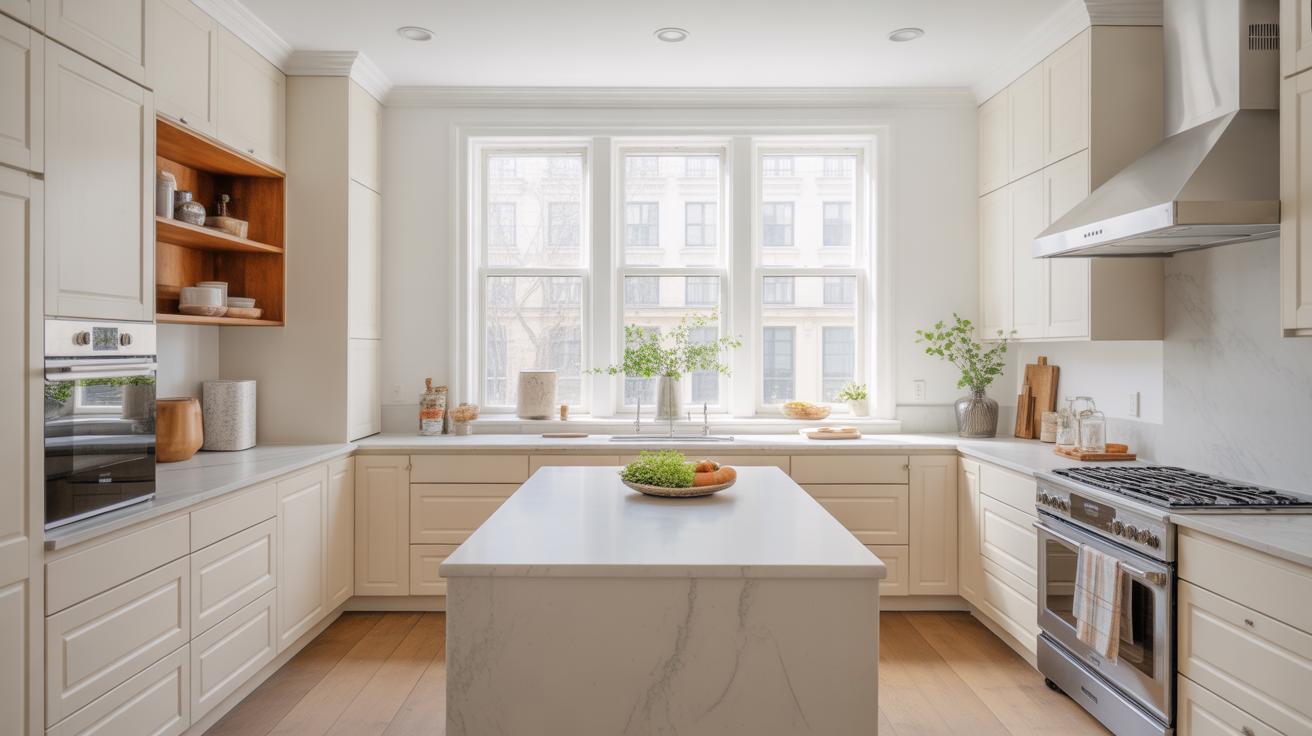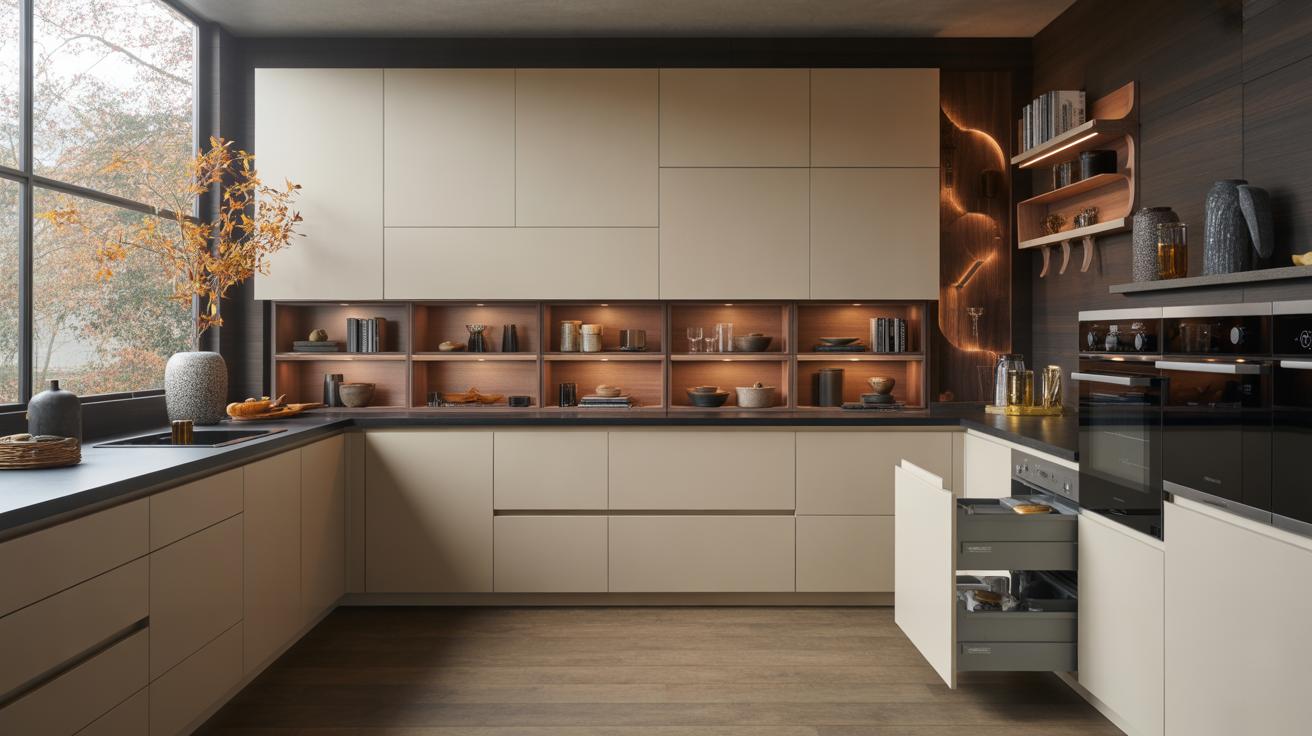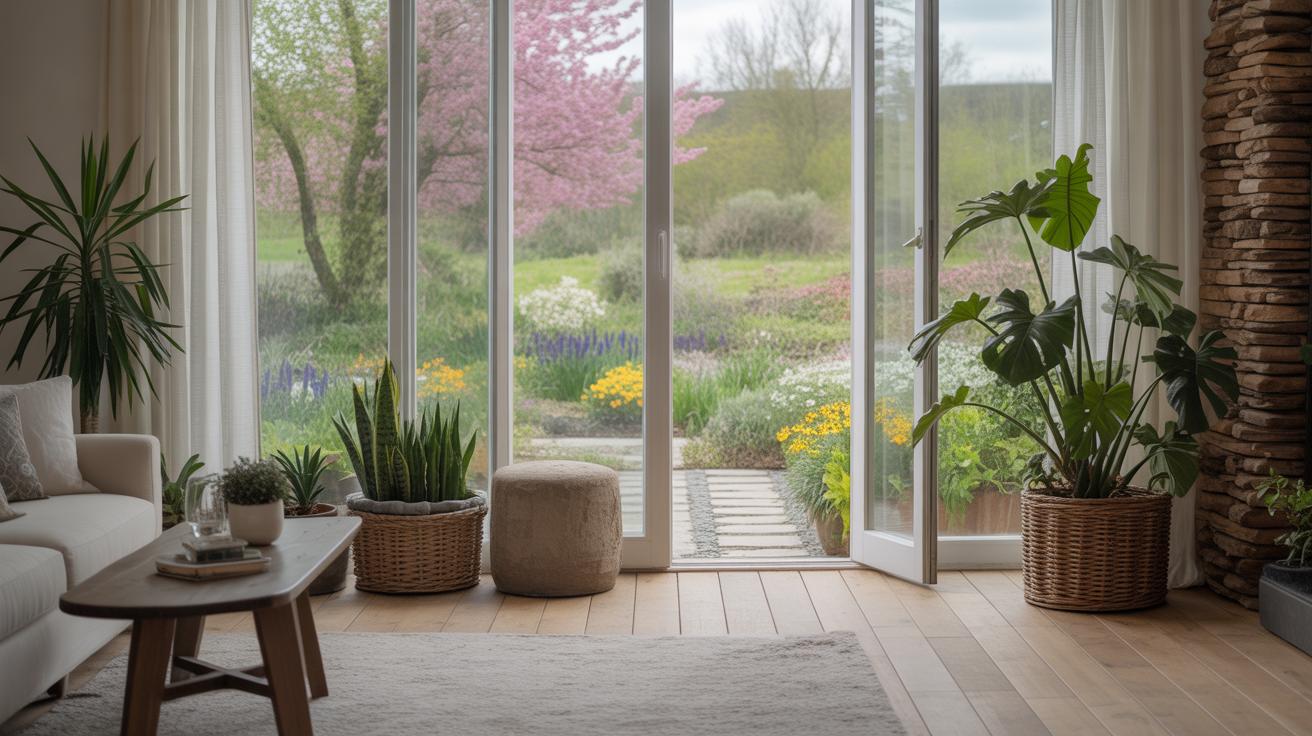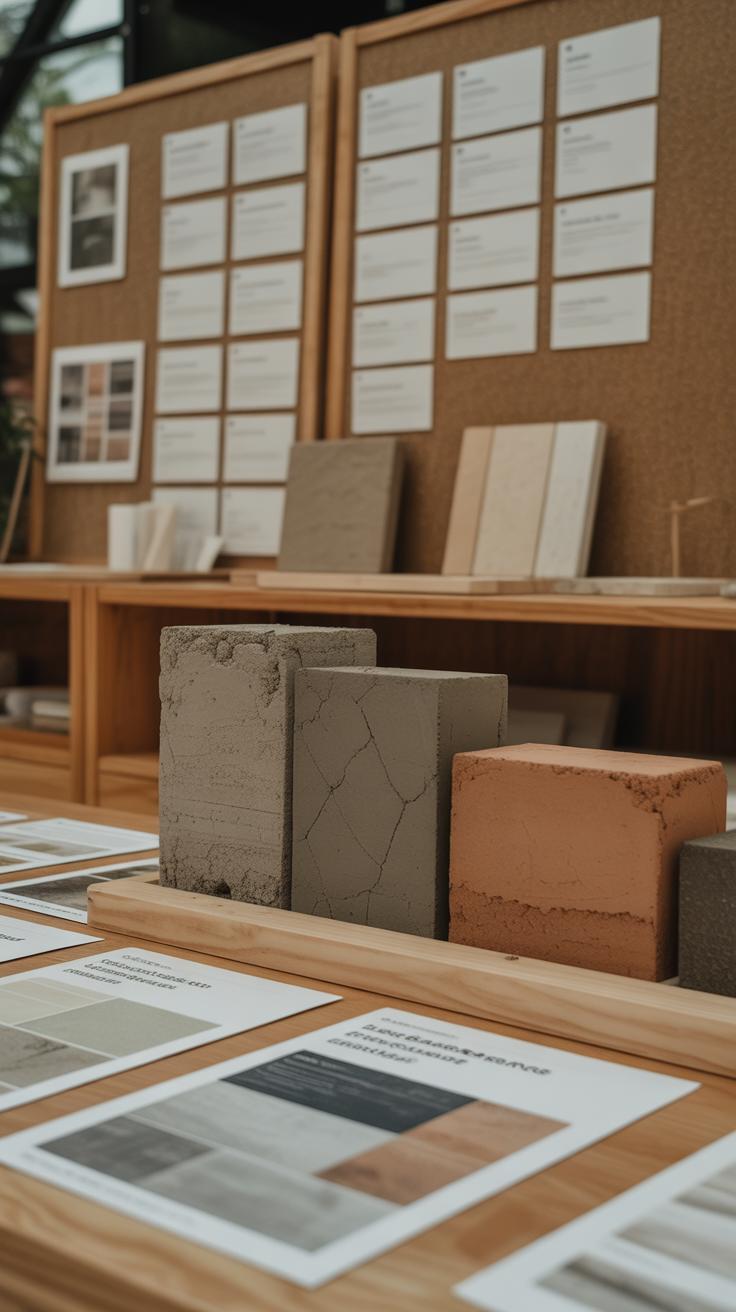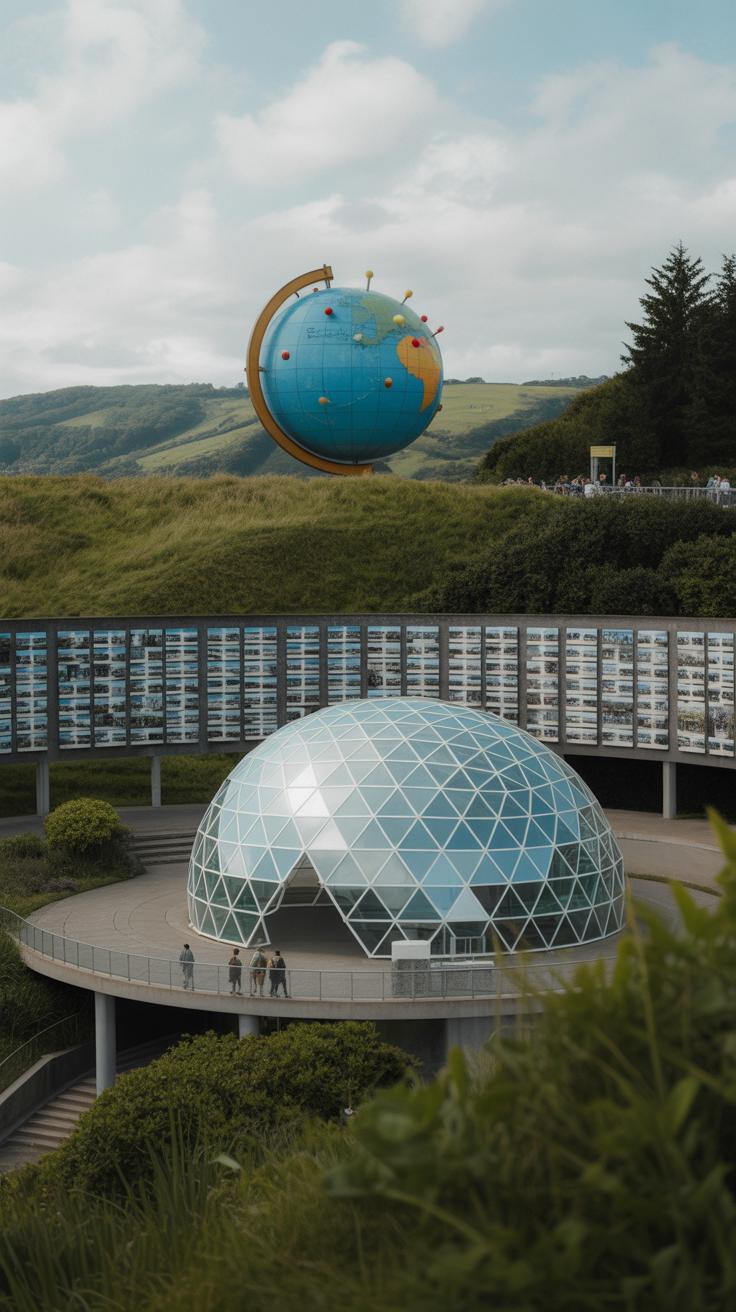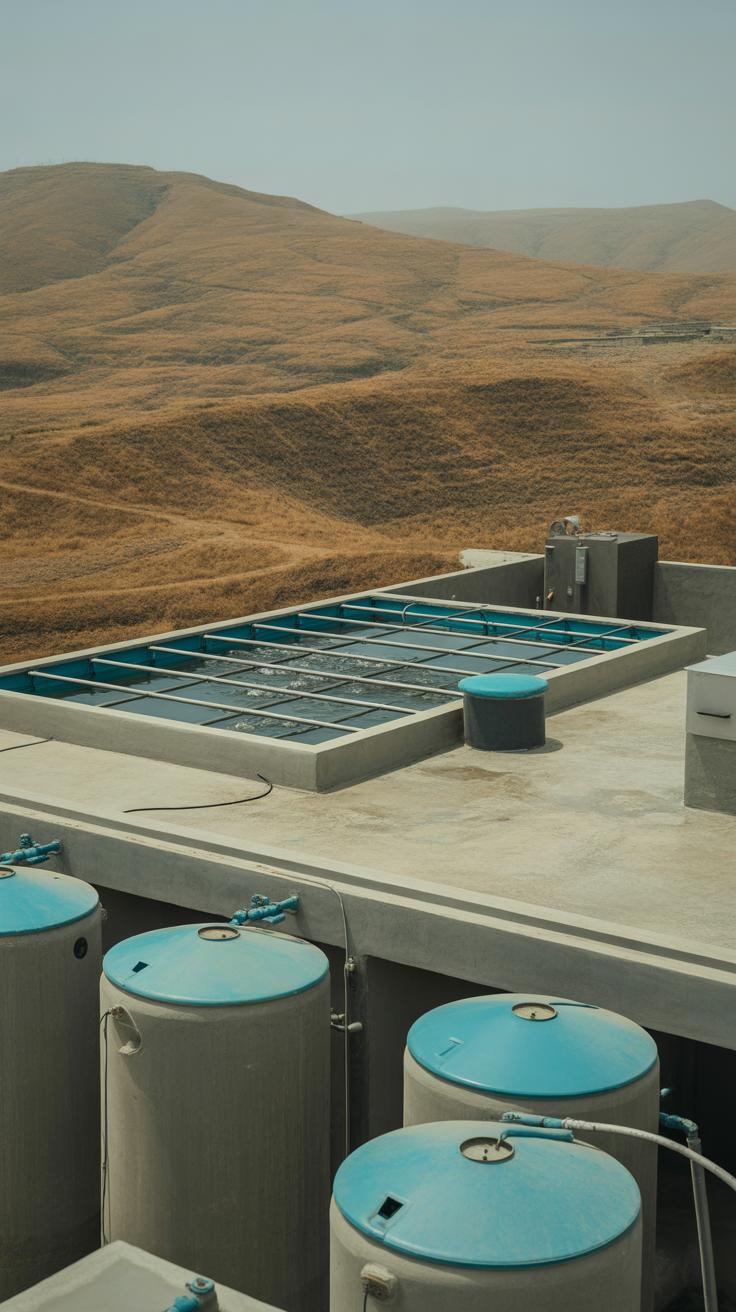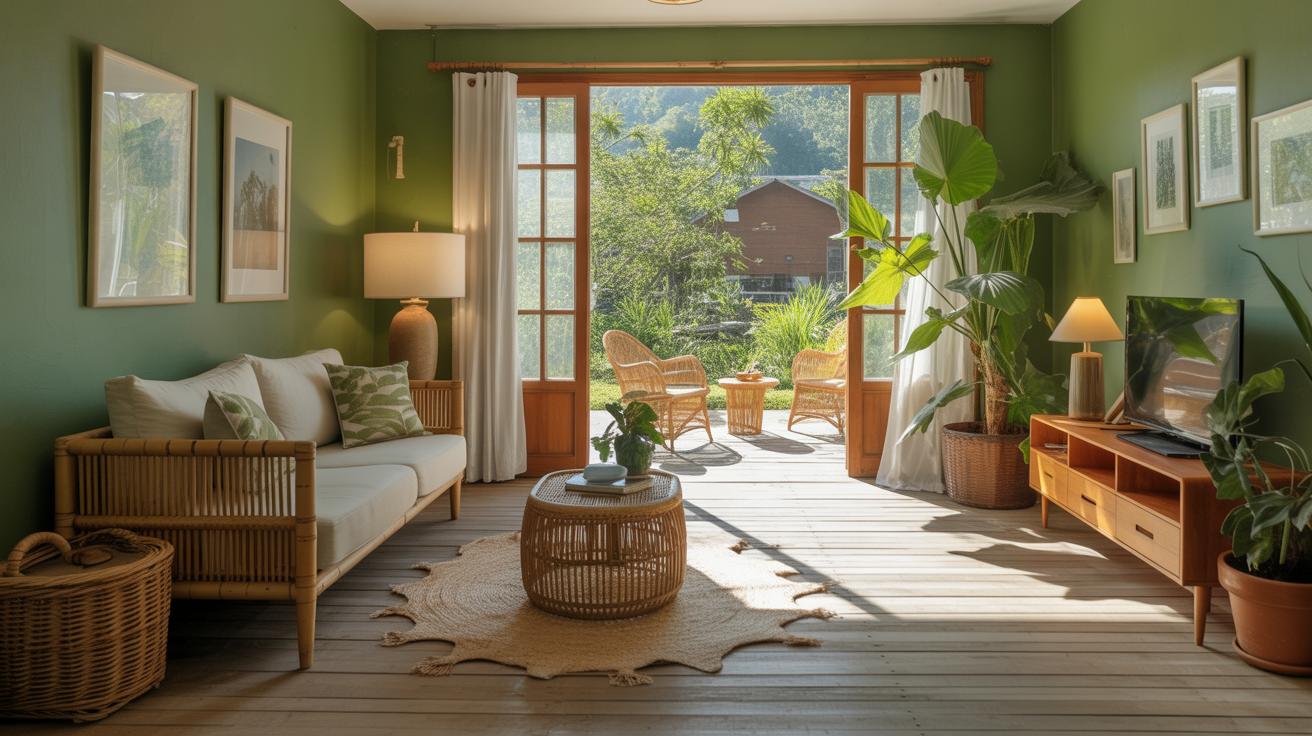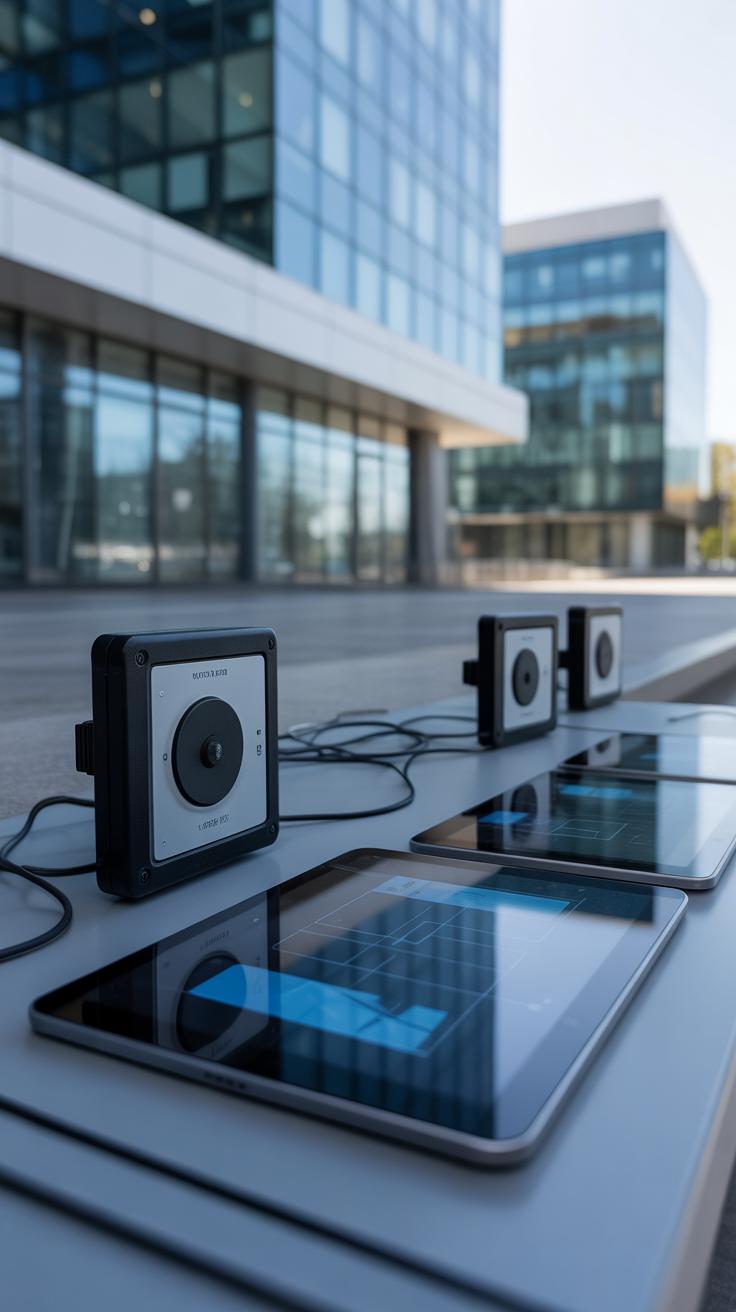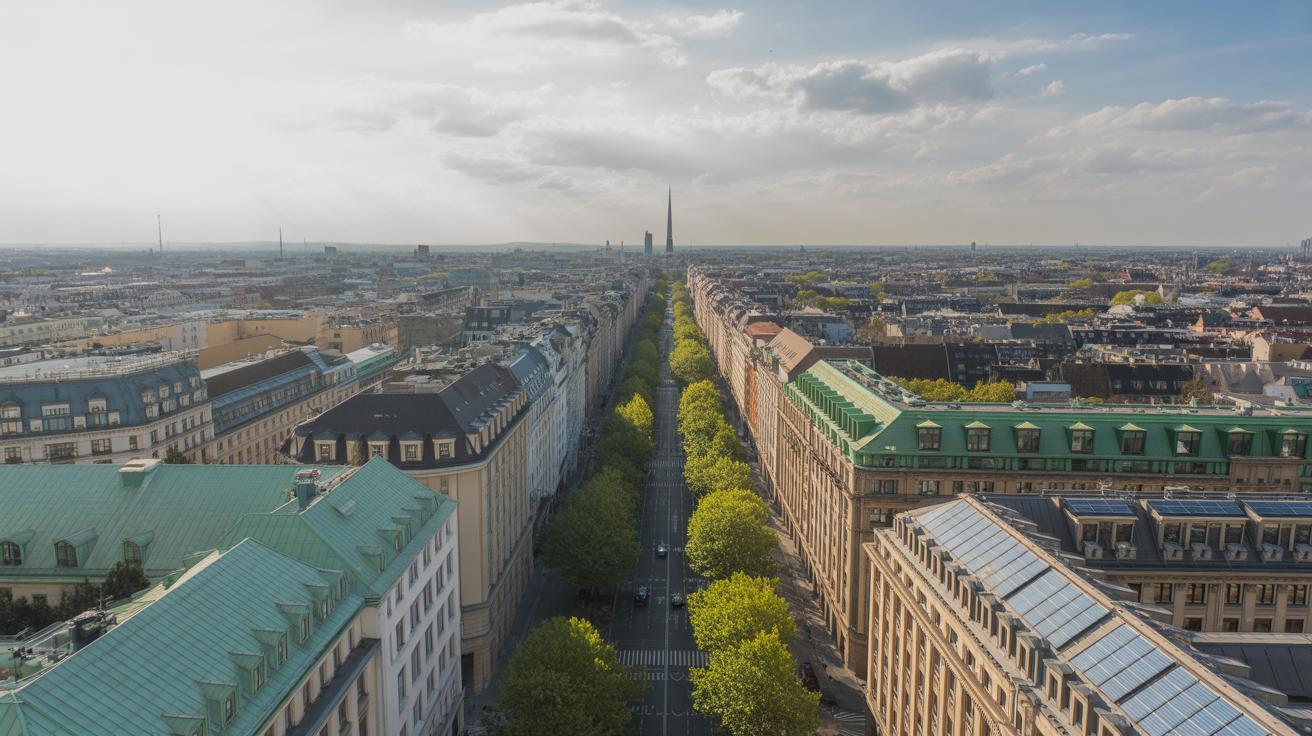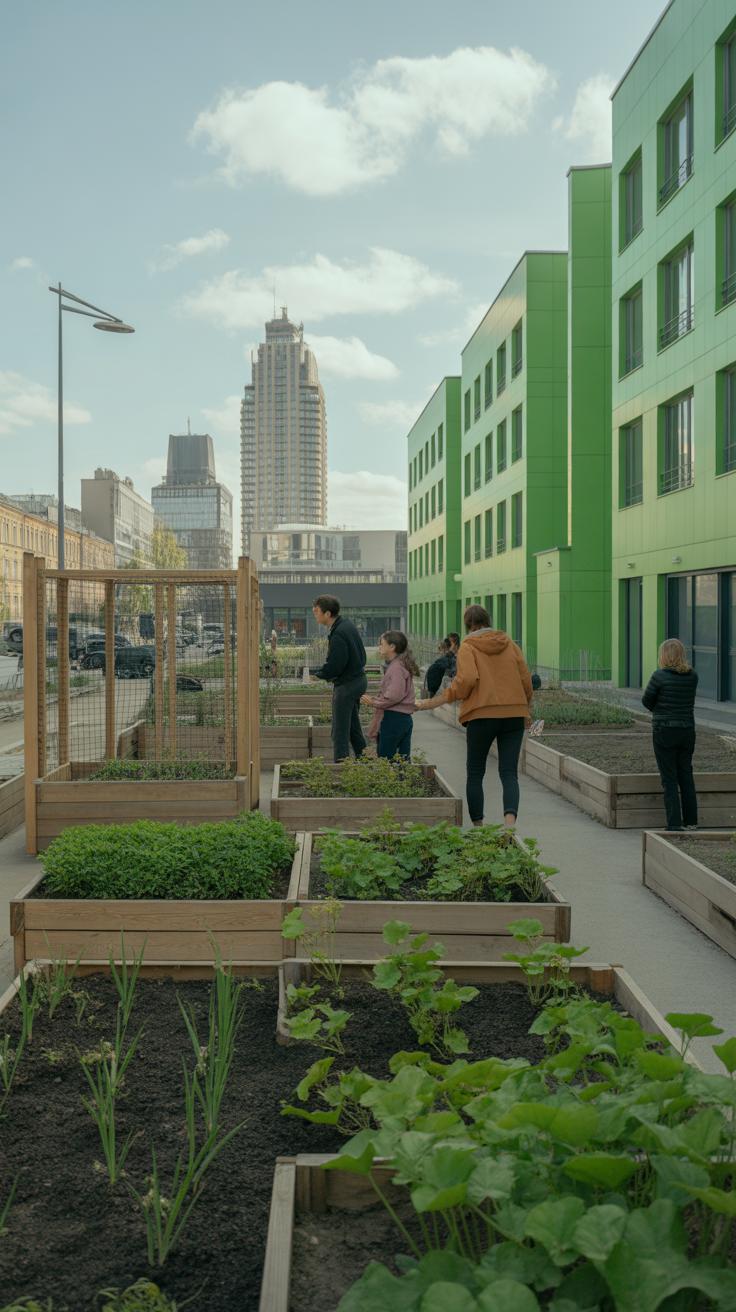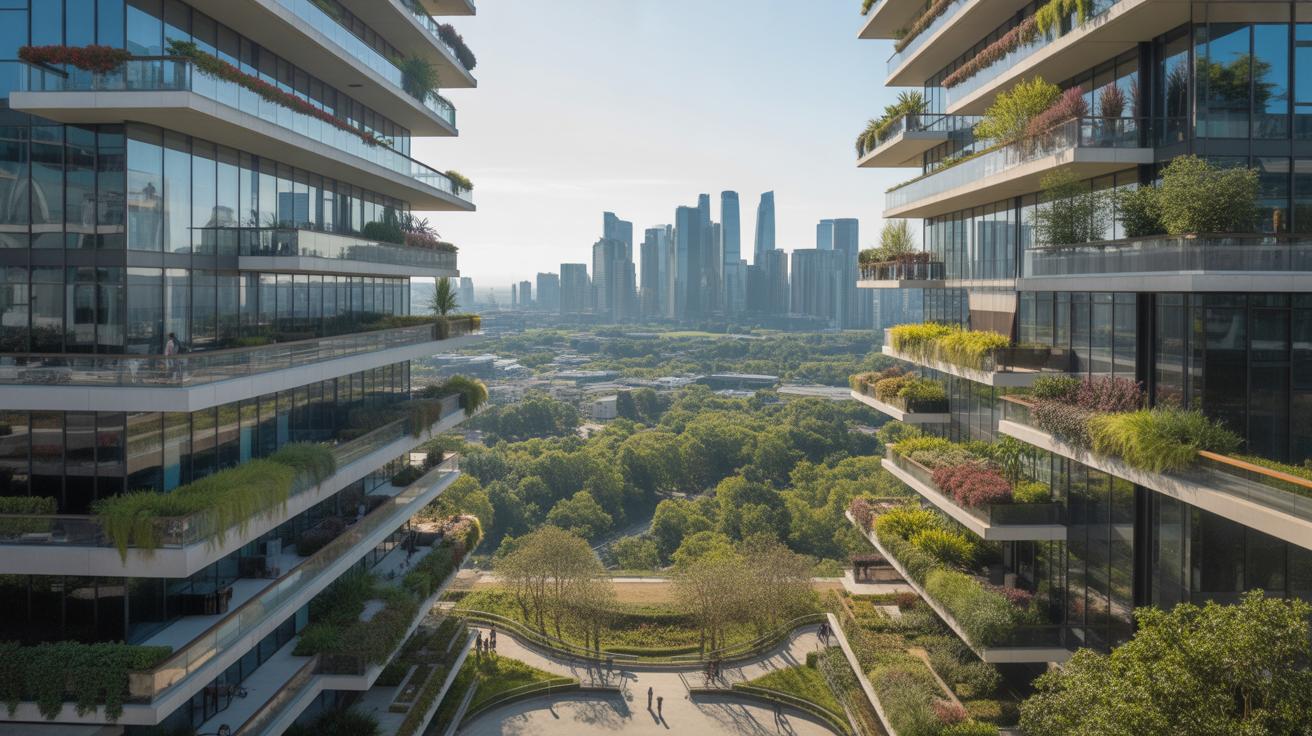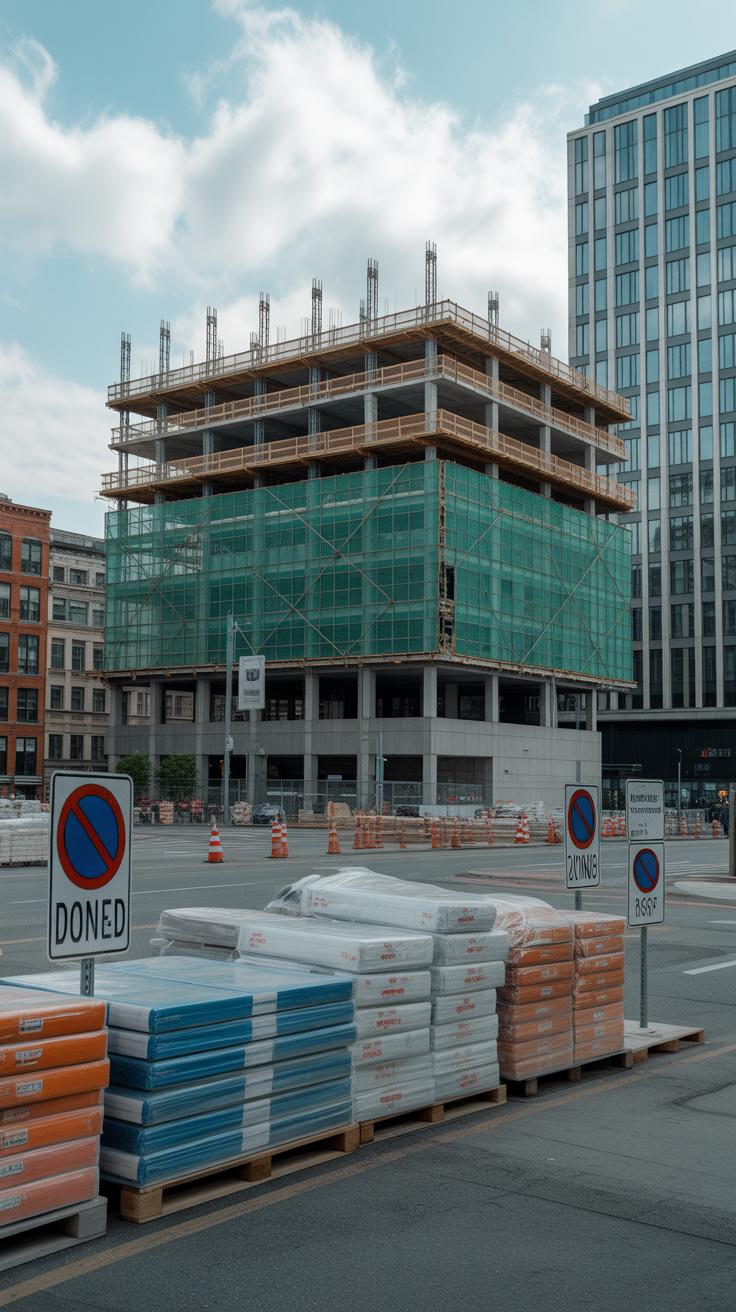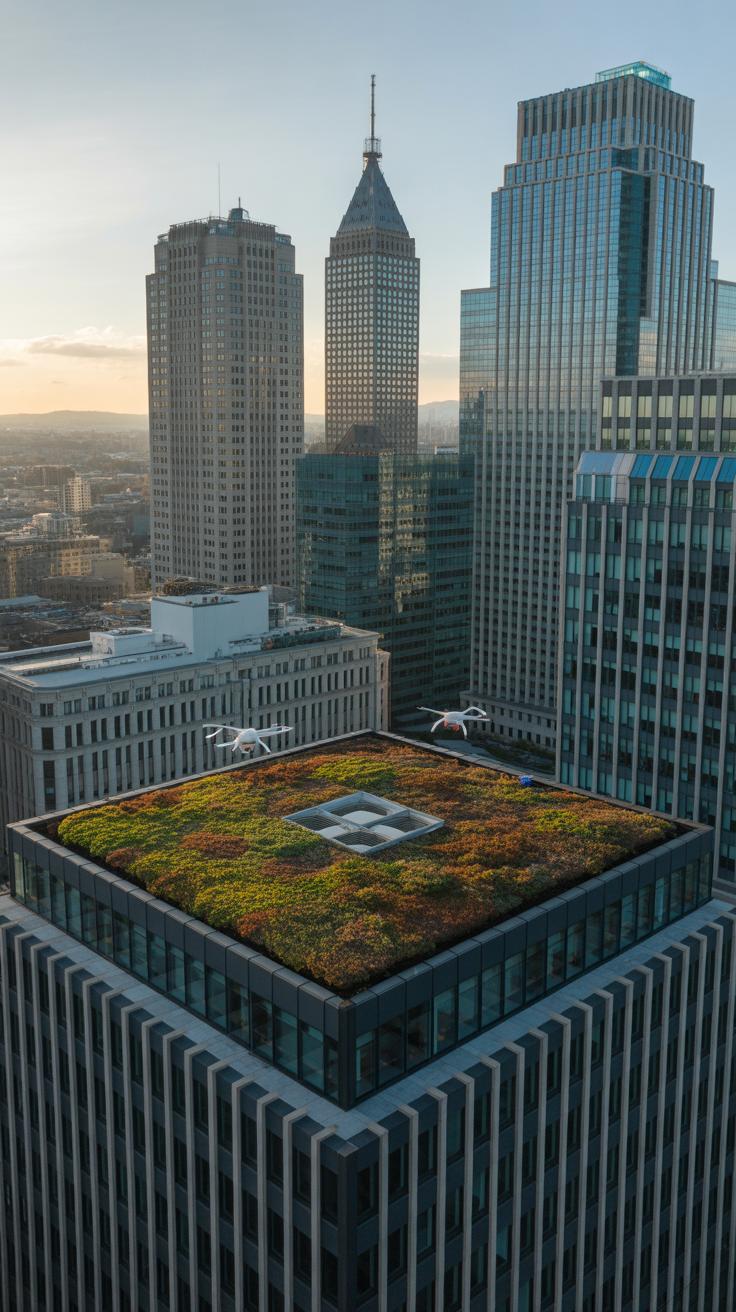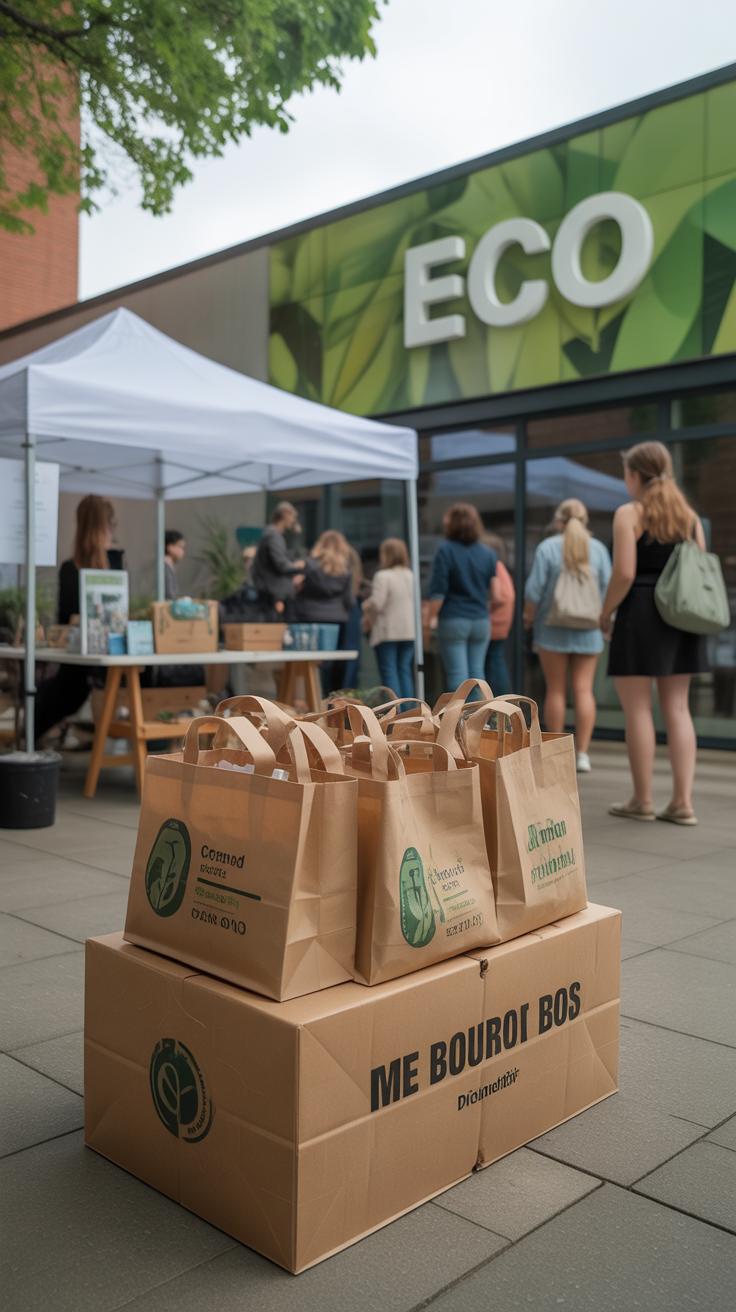Introduction
Iconic Sustainable Architecture Projects Around The World show us how buildings can be designed to protect the environment. These projects use ideas that reduce harm to nature. They use fewer materials, save energy, and create healthy spaces for people. Sustainable architecture cares about today and the future. It helps keep our planet safe.
This article will explore what sustainable architecture means and look at famous buildings that use it well. You will learn practical ways architects design buildings to save energy and use natural resources smartly. You will see how different parts of the world approach this goal. Understanding these designs can inspire you to think about how your surroundings affect the earth and what you can do to help.
What Is Sustainable Architecture
Sustainable architecture is about designing buildings that do less harm to the environment. It’s not just about making pretty structures but thinking carefully about how those structures affect nature and use resources. For example, a sustainable building might use natural light to reduce electricity needs or use materials that don’t deplete forests. This approach considers energy, materials, and space like a kind of careful stewardship.
Take energy: sustainable buildings aim to use less energy by incorporating elements like solar panels or better insulation. When it comes to materials, things like recycled steel or locally sourced wood often replace ones that require a lot of energy to produce. And space? Instead of sprawling out, sustainable design often tries to make the most of limited land, reducing urban sprawl and preserving natural habitats.
Maybe you’ve noticed some new buildings with green roofs or walls covered in plants—that’s part of this too. It’s a way to naturally cool buildings, reduce rain runoff, and create little pockets of nature inside cities. In simple terms, sustainable architecture is about building smarter, with respect to the planet’s limits and without wasting what we have.
The Goal of Sustainable Design
One main goal of sustainable architecture is to reduce energy consumption. Buildings often consume a lot of power for heating, cooling, and lighting, so cutting down on these needs directly lessens environmental impact.
Here’s what designers focus on:
- Reducing energy use through natural ventilation or daylighting.
- Choosing materials that don’t exhaust resources—like bamboo or recycled concrete.
- Minimizing waste during construction by reusing materials or prefabricating parts.
An example is The Edge in Amsterdam, which uses solar panels and smart tech to cut electricity use dramatically. Another is the Bullitt Center in Seattle, often called the greenest commercial building, which manages water recycling and composting onsite.
Sustainable design tries to create buildings that don’t just stand there but work in harmony with the environment. It’s a mix of respecting natural limits and rethinking how we build and live.
How Sustainable Architecture Differs from Traditional
Compared to traditional buildings, sustainable ones often focus more on long-term impacts rather than just upfront costs or aesthetic trends. Traditional architecture might overlook energy waste or the carbon footprint of building materials.
With sustainable design, you often see things like:
- Better site orientation to catch sunlight in winter and shade in summer.
- Using natural, often renewable, materials rather than those that pollute or take centuries to break down.
- Systems that recycle water or capture rain to reduce demand on municipal supplies.
Traditional buildings might prioritize size and style over function related to sustainability. Sustainable architecture puts the environment—and sometimes the wellbeing of occupants—a bit higher on the list.
At times, sustainable methods can feel a bit more complex or costly at first, but they usually pay off over time through savings and less environmental harm. It’s tricky to say one is always better than the other; context matters a lot. Still, the benefits of sustainable design go beyond just energy or materials—they also shape healthier, more livable spaces.
Energy Use in Sustainable Buildings
Sustainable buildings aim to cut down energy use in ways that feel almost natural. They rely on both passive and active methods to keep energy demand low while maintaining comfort. You might find it surprising how much of a difference simple design choices can make when it comes to heating and cooling.
Passive Design Techniques
Passive design is all about working with the environment rather than fighting it. Imagine orienting a building so that sunlight streams through windows in winter, warming rooms without extra heat. Then, in summer, the same building might use shading or overhangs to block harsh sun rays. Natural ventilation, driven by the direction of prevailing winds, helps cool the space without electric fans or air conditioning. These approaches can significantly reduce the need for mechanical systems.
Using thick walls or materials that store heat during the day and release it at night is another common tactic. It’s fascinating how relying on nature’s rhythms can create spaces that feel comfortable year-round. Though, there’s an art to balancing these factors since not every location or climate reacts the same way.
Using Renewable Energy
Beyond passive tactics, many sustainable buildings turn to renewable energy sources to meet their electricity needs. Solar panels on rooftops capture sunlight and convert it directly into electricity – a clear and visible way to cut fossil fuel use. Sometimes, wind turbines come into play, especially in open or coastal areas where wind is steady. They don’t just supply power; they also symbolize a commitment to clean energy.
Some buildings even integrate geothermal systems to tap into the earth’s stable underground temperature for heating or cooling. These renewable options help reduce dependence on traditional power grids, but they usually work best when combined with smart, energy-conscious building design. It raises the question: can a building truly be sustainable without embracing both passive techniques and active renewable energy systems?
Materials That Help Save the Planet
The choice of building materials can make a surprisingly big difference when it comes to reducing a structure’s impact on the environment. Using certain materials helps cut pollution and waste, though it’s not always obvious at first glance.
Natural materials like wood and bamboo stand out because they store carbon instead of releasing it. Bamboo, for example, grows quickly and can be harvested without destroying ecosystems. It’s strong, flexible, and surprisingly useful beyond just flooring or panels—you’ll find it in everything from walls to furniture in green buildings.
Recycled materials also play their role. Concrete and steel can be salvaged and reused, lowering the demand for virgin resources. This reduces landfill waste and energy spent on production. That said, not all recycled material is created equal—some plastics or composites can cause trouble if not processed properly.
The idea of embodied carbon might sound technical, but it simply refers to all the greenhouse gases emitted during a material’s lifecycle—from extraction through manufacturing and transport. Choosing materials low in embodied carbon helps keep a building’s footprint down long before anyone turns on the heat or lights.
So, when picking materials for your project, consider not just how they perform but where they come from and what happens to them afterward. That small step often means fewer emissions, less waste, and a better outcome for the planet—and maybe even a happier building in the end.
Famous Sustainable Architecture Projects
BedZED – Beddington, United Kingdom
BedZED, or the Beddington Zero Energy Development, stands out as one of the earliest attempts at creating a truly sustainable community. Located on the outskirts of London, this housing project combines eco-friendly living with practical design. Its key feature is how it tackles energy use—through solar panels, thick insulation, and smart orientation to capture sunlight.
The buildings use reclaimed and locally sourced materials, which cuts down on transport emissions and waste. What’s interesting is the way BedZED encourages residents to adopt green habits, including walking or biking instead of driving. Though not perfect and at times criticized for lower-than-expected energy savings, it offers valuable lessons on combining community living with sustainability.
The Bosco Verticale – Milan, Italy
This pair of residential towers in Milan showcases a living forest on its balconies. The Bosco Verticale, or “Vertical Forest,” is eye-catching not just for how green it looks but for how that greenery helps improve air quality and supports biodiversity. Trees and shrubs cling to the buildings, offering insulation as well as a natural filter for pollution.
The design reduces noise pollution while providing shade that cools the apartments naturally. It’s not just about aesthetics—this project actively combats urban heat island effects in a dense city center. Some might question its cost and replicability, yet it pushes the conversation on how much greenery an urban structure can hold. It makes you wonder if cities should build upward and green rather than outward and gray.
Water Conservation in Sustainable Architecture
Water isn’t endless, and sustainable architecture tries to be mindful about how buildings use this precious resource. You’ll find that many sustainable designs focus on cutting down water use while repurposing what’s available. It’s not just about saving water but making sure the water we do use serves multiple purposes, sometimes in ways you might not expect.
One approach is collecting rainwater. Buildings often have systems that catch rain from rooftops, channel it through filters, and store it for later use—like irrigation or flushing toilets. Sometimes, this water might even be treated further for other uses. It’s curious how something as simple as capturing rain can drastically reduce the demand on municipal water supplies. In places with unpredictable rainfall, this method can feel a bit like a gamble, but when it works, the impact is clear.
Inside, many sustainable buildings feature water-saving devices like low-flow faucets and toilets. These fixtures control water flow without making you feel like you’re in a drought zone. For example, a low-flow toilet can cut water per flush in half compared to traditional models. You might wonder whether these fixtures hamper comfort, but in most cases, technology has gotten good enough that you hardly notice the difference. Still, some people swear by their old fixtures, citing a kind of trust that new tech hasn’t won over completely.
Here’s a quick look at common water-saving features in these buildings:
- Rainwater harvesting tanks connected to plumbing systems.
- Dual-flush toilets that let you decide how much water to use.
- Automatic faucets that limit water flow and reduce waste.
- Greywater recycling, where water from sinks or showers is reused for landscaping.
When you think about your own water use at home, what could you adopt from these ideas? Maybe you don’t have to install a giant rainwater system, but simple fixtures can still make a difference—sometimes that feels more achievable, at least.
The Role of Technology in Green Buildings
Smart Building Systems
Smart controls are quietly changing how buildings manage their resources. These systems can adjust lighting, heating, and cooling based on real-time occupancy or weather changes. Imagine a room that automatically dims lights when no one is inside or lowers the heating when windows open. This kind of control isn’t just convenient—it helps avoid waste.
Water use also benefits. Sensors detect leaks or track usage patterns to prevent needless loss. Sometimes, these systems even analyze behavior to suggest better habits, like shorter showers or turning off taps more diligently. The idea isn’t just to control but to respond thoughtfully to the building’s daily rhythms.
Energy Monitoring Tools
Tracking energy use has moved beyond simple meters. Now, detailed dashboards show which areas consume the most power and when spikes occur. This information lets building managers identify problems or inefficiencies they might not otherwise notice.
Some tools even predict future consumption based on past trends and alert users before big bills arrive. You might find yourself checking the app just out of curiosity or to see if last week’s efforts to reduce use actually made a difference.
While these technologies help in saving energy, it’s intriguing how they sometimes reveal unexpected challenges—like devices left on for convenience or peak usage tied to habit rather than need. The technology spells out what we often overlook, prompting a change that’s practical yet subtle. Would you use such tools if given the chance?
Social Impact of Sustainable Architecture
Healthy Indoor Environments
Sustainable architecture isn’t just about saving energy or cutting emissions; it also shapes the spaces where people live and work every day. One key aspect is creating healthy indoor environments. When buildings use natural ventilation, non-toxic materials, and large windows for daylight, the air feels fresher, and rooms become more inviting.
Good lighting isn’t just a luxury—it affects how well you focus and your mood throughout the day. Studies suggest that access to natural light can reduce stress and even improve sleep patterns.
At my old office in a LEED-certified building, I noticed fewer headaches and felt more energized. That might sound like a minor detail, but it really changes how a space feels to be in it. Clean air inside isn’t guaranteed everywhere, especially in cities, so well-designed buildings can make a significant difference.
Community Benefits
Think about green buildings as part of a broader community fabric. They often encourage social connection through shared gardens, open courtyards, or communal spaces designed for interaction. Such features can break down social barriers and invite neighbors to gather or collaborate.
There’s a subtle yet meaningful change when a community shares a green space—people tend to feel a stronger sense of belonging. Some projects even involve residents in the design or maintenance phases, creating a surprising level of ownership and pride.
Beyond physical structures, these buildings can boost local economies by attracting people who value sustainability. But I wonder if that sometimes leads to gentrification or exclusion—does making spaces greener always mean they become more accessible? It’s complicated, right?
Still, the potential for sustainable architecture to support social well-being is real and worth paying attention to as you think about what kind of neighborhoods you want to live in or build.
Challenges of Sustainable Architecture
Sustainable architecture sounds great in theory, but designing buildings that truly protect the planet is far from straightforward. Architects often wrestle with multiple challenges, some obvious, others less so. It’s not just about picking green materials or slapping solar panels on a roof.
Take costs, for example. Sustainable materials and systems usually come with a higher upfront price. This can be a real obstacle, especially when budgets are tight or clients prioritize immediate savings. You might be surprised how often designers have to balance the desire for sustainability with the hard limits of finance. To manage this, they often phase projects—invest more early on in energy-saving features that pay off over time through lower bills. Or they hunt for grants and incentives that ease the pinch.
Another big issue is that sustainable design demands specialized knowledge. Not every architect or builder knows how to optimize for environment-friendly outcomes; it’s a niche skill set. That gap means teams have to bring in experts, and overall collaboration becomes tougher. When everyone’s on different pages, important details can slip through the cracks. That’s why education and ongoing training are slowly becoming parts of standard architectural practice, though not yet common enough.
There’s also a sometimes unnoticed tension: technology itself can complicate things. Cutting-edge sustainable systems may need precise installation and maintenance, adding layers of complexity. It raises a question: should architects always push for the newest tech, or sometimes stick with simpler, proven methods?
Designers solve these dilemmas by embracing adaptability. They mix traditional construction wisdom with new techniques, negotiate priorities with clients, and keep learning. It’s not an easy path—but maybe that’s what makes sustainable architecture so intriguing in the first place.
Future Trends in Sustainable Architecture
Green Materials Development
You might be surprised how fast new eco-friendly materials are emerging—things that weren’t even on the radar a few years ago. For example, mycelium, the root structure of mushrooms, is gaining traction as a lightweight, biodegradable insulation. It’s fire-resistant too, which makes it quite appealing for certain buildings.
Another promising material is bamboo-based composites. Bamboo grows quickly, and researchers are finding ways to make it stronger, even replacing steel in some structural parts. Though it’s not perfect and can be vulnerable to pests, ongoing treatments are improving durability.
Then there’s recycled plastic lumber, transforming waste into usable decking, framing, or panels. It’s not just a clever reuse, but often resists rot and insects better than traditional wood. If you’re thinking about reducing waste and resource extraction, these materials might be worth watching.
Building with Nature
There’s a growing fascination with designs that don’t just sit on the land but actively work with natural processes. Think of buildings shaped by sun paths or those that mimic the surrounding ecosystem. Some architects create wetlands alongside developments to manage stormwater naturally, reducing the need for mechanical systems.
One example I recall is the concept of “living roofs” that host native plants, supporting pollinators and cooling buildings at the same time. It’s a simple idea, but it highlights how building and nature aren’t always opposing forces.
Still, it raises questions: How do you balance human needs with ecosystem health? Sometimes, letting nature reclaim certain spaces might conflict with urban demands. These tensions are part of the challenge but also the potential for creative, responsible design.
How You Can Support Sustainable Architecture
Choosing Eco-Friendly Products
Picking materials for your home can feel overwhelming, but small choices add up. Think about what’s underfoot—bamboo flooring, for instance, grows fast and renews naturally. It might not suit every style, yet it’s a solid alternative to hardwood.
Look for products with clear labels about their origins or recycled content. Sometimes, cork or reclaimed wood surprise me with their warmth and character, even if they aren’t spotlighted often. Don’t overlook paints and finishes either; water-based, low-VOC options help keep indoor air cleaner. These choices might cost a bit more upfront, but you could save on maintenance and health-related expenses over time.
Advocating for Green Building
Encouraging sustainable design doesn’t have to be formal. In your neighborhood or workplace, start by asking simple questions: “Are there steps to reduce energy use here?” or “Could future renovations include solar panels?” These conversations might spark ideas nobody expected.
You might try connecting with local groups focused on environmental issues. Often, they welcome fresh voices and can guide you on policies or incentives in your area. Sometimes, just sharing articles or hosting a casual talk about eco-friendly buildings can shift perspectives over time.
Have you noticed how a few green spaces in a community can subtly change the mood? Even small efforts like supporting a nearby project—say, a community garden or a building with natural ventilation—help build awareness and demand for sustainable practices. It’s not always about large actions; it’s about steady nudges in the right direction.
Conclusions
Sustainable architecture is a way to build that respects nature and resources. It means saving energy, using fewer materials, and thinking about how buildings impact the environment. By looking at iconic projects, we can see how these ideas become real buildings that serve people and the planet.
Each building you learned about shows a step toward a cleaner and safer Earth. When you think about new homes, schools, or offices, remember these examples. Your choices can help the environment too. Together, we can build a world that supports everyone now and in the future.

